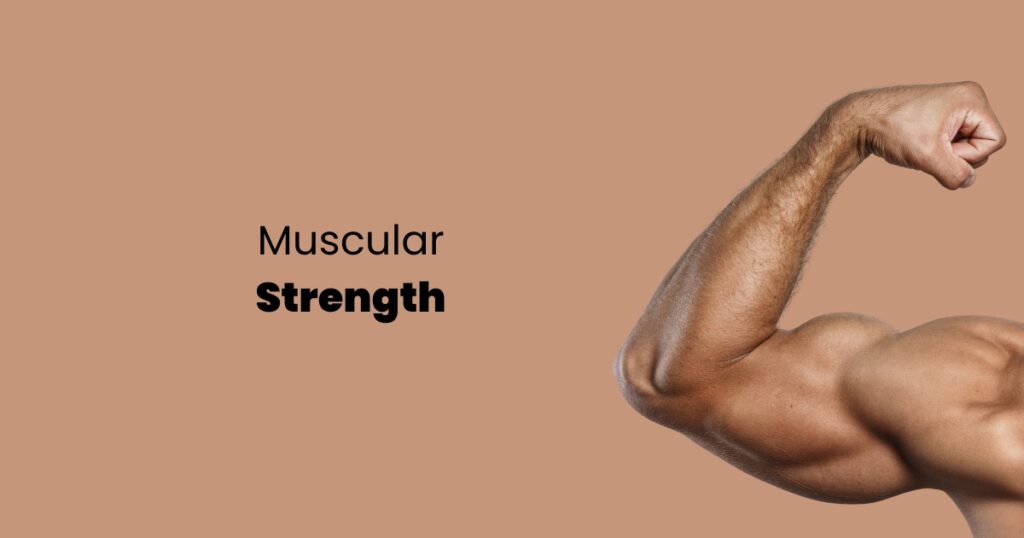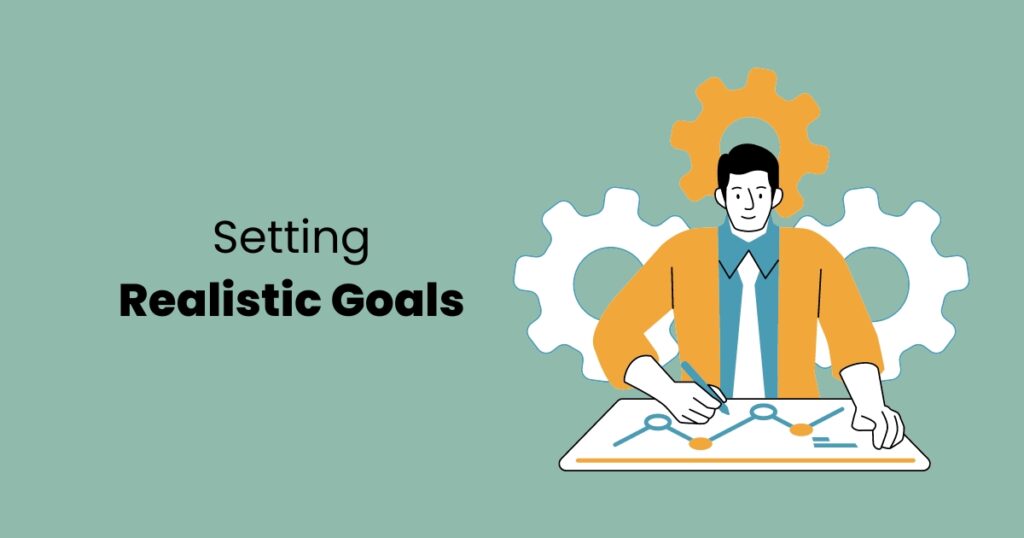Many people set goals to work out, stay fit, or lose weight, but if you want your fitness journey to be successful, it all starts with how well you can measure exercise intensity. Fitness is not limited to only one thing; it contains cardiovascular capability, sturdy muscle strength, flexibility (which you more than not ever plan in view of yoga), and appropriate body creation. When we measure our fitness, we can record these benchmarks to set realistic goals and adjust our workouts for what works best with regard to overall health. In this article, we discuss all forms of measurement that can help you keep track of what parameters need a change throughout your health and fitness journey.
Cardiovascular Endurance
Cardiovascular Endurance (Aerobic Fitness) is the ability of the heart, lungs, and circulatory system to supply oxygen to working muscles during sustained physical activity. It is an important aspect of general fitness and can be measured by how well the exercises you do e.g., running, swimming or cycling are performed over a specific amount of time.
The VO2 max test is a widely used way to assess cardiovascular endurance. VO2 max is the maximum amount of oxygen an athlete can consume when engaging in vigorous physical activity. It is commonly measured during a treadmill or stationary bike test, with workload progressively increasing until peak effort. VO2 max is a peak cardio-respiratory endurance measure: the higher your VO2 max, the better you can perform cardiovascular activities for prolonged length of time.
A Cooper Test is another functional method to determine cardiovascular endurance. The test is 12 minutes to run/walk as far as you can in that time. Your performance uses the distance you cover to estimate your cardiovascular fitness. It can also be used as a tool to monitor your progress and how much endurance you have built up over time.

Muscular Strength
It defines the maximum force which a muscle or group of muscles can generate. It is an essential part of your overall fitness and daily activities as well as helps to keep a body function properly. Assessing muscle strength can be done in many ways but targeting different muscle groups.
Body composition Muscular strength The 1-Rep Maximum (1RM) Testifies is the most common test for measuring muscular strength. This is the test of how much weight you can lift for a single repetition in exercises such as the bench press, deadlift, or squat. These maximum weight tests must be done very cautiously, after a good warm-up that should vary for deadlifts, and in order to perform the 1RM Test, you increase your charges gradually until performing the movement at the limit.
Body-weight exercises, such as push-ups and pull-ups also work well for measuring muscular strength in individuals who do not have access to gym equipment. If your looking for strength testing, then you might want to see how many push-ups or pull ups one can do without rest. An individual should be able to complete more repetitions as your strength improves.
Muscular Endurance
The ability of a muscle or group of muscles to repeatedly contract without becoming fatigued is known as muscular endurance. Muscular endurance, on the other hand, concentrates in this setting not upon maximum force but as an alternative for duration respite of dynamic exercise.
Muscular endurance can be tested using timed exercise tests. For instance, the sit-up test requires you to do as many sit-ups as possible in a set period, usually 60 seconds. The amount of sit-ups performed is scored to test abdominal muscular stamina. Lower Body Muscular Endurance: Similar in nature, the push-up test can be utilized to assess the muscular endurance of the upper body.
Another great way to measure muscular endurance, is the plank test. And this is about getting into a plank position maintaining a straight line between your head, body and heels for as long as possible. Also how long you keep a plank is representative of the strength endurance of your core muscles.
Flexibility
Range of motion inside a joint is the definition of flexibility. While an often overlooked issue with fitness, core strength is essential for preventing injuries and providing better posture/mobility.
Perhaps the most frequently given flexibility test is called a sit and reach. This test: you are on the floor with your legs straight, feet against a box or wall. We have you reach as far forward as possible, while measuring how much further you can actually reach. This test is done to measure the flexibility of hamstrings and low back.
You can also go even further and perform mobility tests for various joints or muscle groups in addition to the squat. One common test is a shoulder flexibility test, in which the two tests require you to reach up an arm over your shoulder and back with one hand, then behind your body with the other, trying to have both hands make contact. When shaking hands, this is a sign you are very flexible in the shoulder.
Body Composition
Your body composition is a summarized term describing the segments of fat and lean mass (muscle, bone, water etc. ) that are in your entire frame. One of the most vital measures regarding overall well-being, health and fitness is excessive body fat which has been linked to numerous chronic diseases including heart disease, diabetes mellitus type 2 in addition to hypertension.
We have traditionally used Body Mass Index (BMI) as a means of gauging body composition. BMI calculated as a weight in kilograms divided by the square of height admeasured in kg. Although BMI is a straightforward and common method, it does not discriminate between fat and muscle weight, often providing invalid estimations in individuals with increased muscle mass.
Body fat percentage is a better way of measuring body composition. This could be accomplished with something as simple (yet generally far less accurate) as measurements with calipers to pinch the skin at different parts of the body or more sophisticated analyses from bioelectrical impedance analysis(BIA), dual-energy x-ray absorptiometry (DEXA), hydrostatic weighing, etc. The relaxed article is a more comprehensive overview of how they measure body fat and lean mass, which can give you an idea in detail about your full figure.
Balance and Coordination
Balance and coordination are important components of a physical fitness assessment that people often overlook, but they will become even more critical as we age. Achieving good balance and coordination helps reduce falls, improve postural stability, and increase sports performance.
An easy test to assess balance is the one-leg stand test. During this test, you stand on one leg and time how long it takes before you have to put your other foot down because of poor balance. If you can stand up for longer without falling over, your balance is going well.
Possibly assess coordination via heel-toe walk The test consists of walking a straight line with one foot directly in front of the other, heel to toe. The ability to pass this test without falling over means good coordination running wise.
Tracking Progress
Fitness measurement is not done just Once for all, it should be a Regular activity to know if your exercises are working fine & and adjust your fitness routine accordingly. Get a fitness journal or using apps to help record your results, establish goals and monitor improvements over the course of time.
A reminder that fitness and unity are not a sprint, but an individual journey released progress in all sorts of areas may take longer for some than others The important thing is, that you are consistent and committed to your fitness goals.
Setting Realistic Goals
Having assessed where your fitness is now, the second part it to set attainable goals. That way you will stay motivated, and can track if your cardiovascular endurance has improved over time (if that is what you are working towards), or how much body fat percentage reduction per month have achieved.
Goals should be set using the SMART criteria: Specific, Measurable, Achievable, Relevant, and Time-bound. So, for instance, instead of a generic and hopeless goal like “get stronger,” you should set SMART goals that could look something like: “Increase my bench press by 10 lbs in the next two months.”

Customize Your Core Workouts Personalize it.
Now, with your fitness measures all laid out in the open before you complete to classifying goals this is now a dodgy business as currently, it seems like anyone can become an expert on twitter (why), and not hire someone solid or stick than what really needs to be done? Whether your goal is increasing cardiovascular endurance, building core, and upper body strength, or improving flexibility to dive into the water in good shape, you should not only swim long distances but also cover a broad range of styles that work different areas of fitness.
Rest and yield are equally important as exercise. Excess weight can cause injuries, and it is important to remember that you need rest days between workouts. Also, consult with a fitness professional who can help you create safe and effective programming based on this goal.
Conclusion
Monitoring fitness is an integral part of living a healthy life. By testing your cardio fitness, muscular strength, flexibility, and balance or coordination regularly, you can gain a clearer picture of your level of body composition (lean muscle versus fat) as well as how balanced true I’d be. It helps in keeping track of the positive changes that are happening over time! They allow you to set realistic goals and create a tailored plan for your fitness journey, ensuring that you stay motivated by pooling these resources together. Keep in mind that fitness is a process, and anything you wish to achieve will evolve through commitment, not completion.

